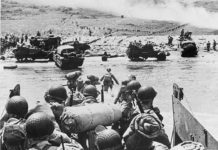Royal Navy rations in the early 19th Century were thought to be mainly ‘hard tack’, salt pork and a gallon of beer, but recent research proves otherwise.
Life in the Royal Navy of Nelson’s time has been pictured as one of continuous suffering for the press-ganged common sailor who was systematically starved and terrorised into doing his duty.
The truth is that Royal Navy rations during the French Revolutionary and Napoleonic Wars, between 1793 and 1815 were more substantial and nutritious, according to recent research on how the Royal Navy fed itself during that period.
The popular notion that the Royal Navy achieved a string of victories at sea on rations of ship’s biscuit (‘hard tack’) salted meat and gallons of beer was found to be a myth by researchers from the Greenwich Maritime Institute.
Rations in the Royal Navy 1793 – 1815
In the context of the common lifestyle of those times the Royal Navy sailor ate far better than a labourer on shore as the sailor ate meat four times a week, and had a hot meal every single day.
A century earlier, Samuel Pepys, nowadays more famous for the diary he kept during the Restoration, had standardised naval victualing by setting down a comprehensive table of daily rations for every man in the Royal Navy.
Over the years Pepys’s very basic scale of rations had expanded until by 1795 they included beef, pork, pease (garden peas or varieties of chickpeas) cheese, and even butter to go along with the inevitable ship’s biscuit which was washed down liberally by a gallon of beer per-man per-day.
While in port Royal Navy ships might be provisioned with fresh meat and baked bread instead of ‘hard tack’, and fresh vegetables might be taken on board as well under a rather complicated substitution system according to seasonal availability and local sourcing.
A growing awareness by about 1800 of the causes of ‘scurvy’ (painful symptoms of Vitamin C deficiency) soon saw the addition of citrus fruits to rations.
‘Pussers’ Rum Ration – A Myth Exploded
It was (and still is) popularly believed that a daily issue of a tot of rum had prevailed throughout the Royal Navy since time immemorial, but research has revealed that rum was only substituted for the mandatory gallon-a-day beer allowance for those ships based on the West Indies station.
Gradually, the issue of the daily tot of rum became institutionalised throughout the fleet, and the colloquial ‘Pussers’ (‘Pussur’ equals ‘Purser’) daily rum ration continued to be offered aboard all ships of the Royal Navy until 1970 when it was perhaps thought best that steady hands should control advanced missile systems.
Supplying Rations for the Royal Navy
In the early 18th Century a naval fleet of sailing warships with very large crews to work them (in 1810 there were a hundred and forty-thousand men) called for the world’s largest network of food warehouses to keep them supplied, with major victualing yards at Deptford, Portsmouth and Plymouth.
The huge old Royal Navy victualing yard in the Stonehouse district of Plymouth, Royal William Yard, nowadays a protected historic building, is worth seeing for an idea of the enterprise.
The British Government recognised it was crucial that seamen of the Royal Navy be provided with a healthy diet and ample rations in order to outfight the French at sea and forestall invasion, and they were willing to pay the price. Half-starved men would not have succeeded in that vital task.
References:
- Sustaining the Empire: War the Navy and the Contractor State
- Europe: A History – Norman Davies, Pimlico, London








